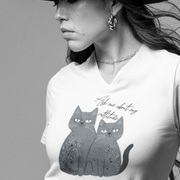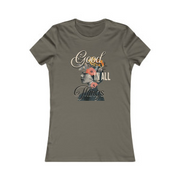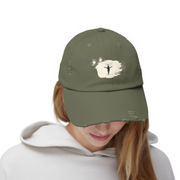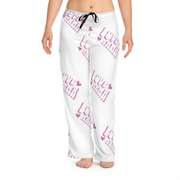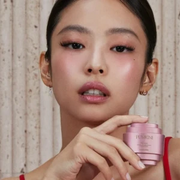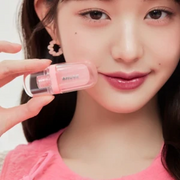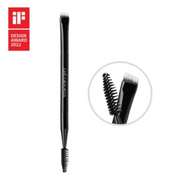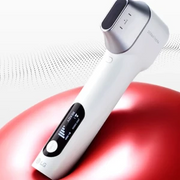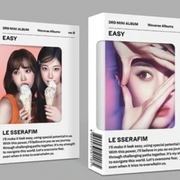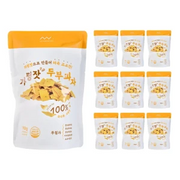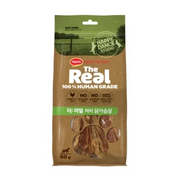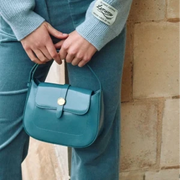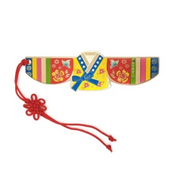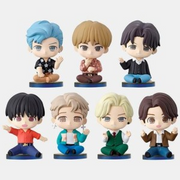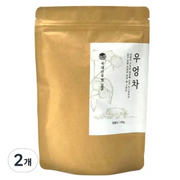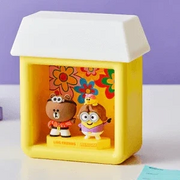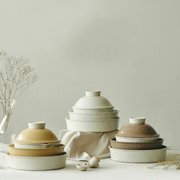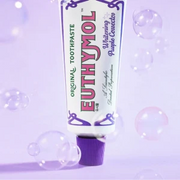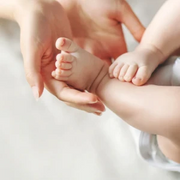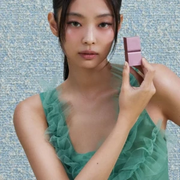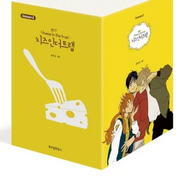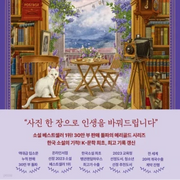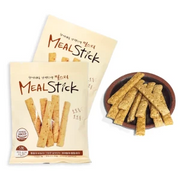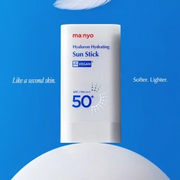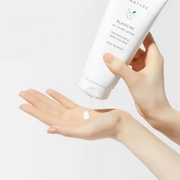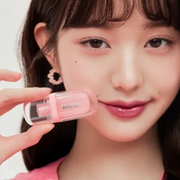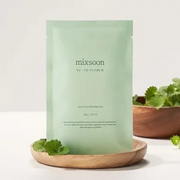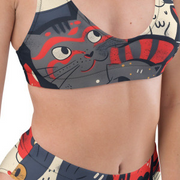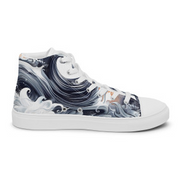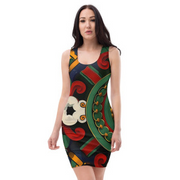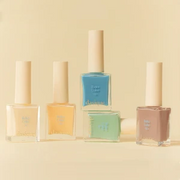PRODUCT DETAILS
book introduction
What kind of flower am I a seed?
"What kind of seed are you?" is a picture book by Choi Sook-hee, author of "It's okay" and "Me too", which is loved by warm and lovely pictures. We support the seed-like dreams of our children with infinite potential through the story of each insignificant seed blooming its own beautiful flower. The pretty paintings that seem to smell like flowers purify the eyes and minds of those who see them.
Seeds blown away by the wind bloom into dandelions, ugly shriveled seeds bloom into sorghum flowers, and curled seeds bloom into peonies. The figure of a child is drawn next to the seed, and the figure of an adult who has grown up wonderfully and beautifully is drawn next to the flower. Like seeds that take root, grow stems and leaves, and grow little by little, we deliver hope and courage to children who will achieve their own dreams.
Publisher book review
A warm message of encouragement from picture book author Choi Sook-hee to all children in the world.
Flowers of different colors and shapes
A song of hope for children who are like precious seeds!
The sorghum flower that spreads fragrance throughout the village,
The balsam that does not lose in the scorching sunlight or the pouring rain,
A hollyhock that makes anyone smile while looking at each other… … .
What kind of flower am I a seed?
A picture book made by planting seeds and making flowers bloom,
A picture book made with the beauty of our folk paintings
A few years ago, the artist set up a cozy studio in a building built into the hillside. She found an empty piece of land the size of a palm behind the building, so she asked the owner for permission to farm. The owner kindly gave permission, and the artist, like a novice farmer, sowed various seeds greedily. It's to the point where I'm confused about which seeds I planted later on. As time went by, small cotyledons poked out from the spot where the seeds were sown. The sprouts scrambled to stretch their stems and put out their leaves, struggling to find their place in a space the size of a palm. The artist watched the sprouts grow and became anxious about how long it would take for these guys to bloom balsam, morning glory, chaesonghwa, and flower buds.
Seeds sprout, put out leaves, bloom, and bear fruit naturally throughout the four seasons. But if you don't lower your body and look carefully, you won't see it very well. As poet Na Tae-joo sang in his well-known poem, “Flowers,” it is bound to be pretty when you look at it closely and endearing when you look at it for a long time. Now, the artist has come to pay attention to all kinds of flowers, not only the flowers he planted in his palm-sized vegetable garden, but also the small grass flowers scattered in the valley, and colorful flowers such as pansies and chrysanthemums planted in flower beds on the street. Flowers are all different, small flowers, large flowers, simple flowers, splendid flowers, early blooming flowers, late blooming flowers... … Each has very different characteristics. The artist wanted to capture all kinds of flowers that had grown so large in his heart in his picture book. Using the expression technique of our old paintings that I learned while attending a folk painting class two years ago. The expressive technique of our painting was very well suited to express colorful flowers such as peonies and lotuses more splendidly, and to reveal the simple and modest beauty of small and delicate flowers such as dandelions and island flowers.
The story I want to tell all the children of this land,
“You are the seed that bears the flower.”
While preparing a picture book about flowers and seeds, the artist recalled the eyes of his son, who had just become a college student and was about to leave his mother's arms, and the eyes of countless children he met while visiting the library or elementary school. The phrase ‘every child is a seed with infinite potential’ is a metaphor that we are all too familiar with. But we often forget the precious truth in this familiar parable. The artist wanted to remind us of this precious truth once again through lyrics like lyrics and beautiful pictures. In addition, I hoped that we adults would look back on whether we want our children to be the same sleek and handsome seeds or the same colorful flowers that stand out more than others.
We are all born of one seed. Life, which was small, frail, and even shriveled, gradually grows and lives by blooming flowers. Some are weak, some are nasty, and some are late, but each child with a surprisingly different personality blooms into various flowers to enrich the world. There is no flower in the world that is not beautiful. As if all the seeds in the world sing about the beautiful possibilities of the past, the author whispers, and at the end of the book, he ‘declares’ in a slightly firm voice. “Yes, you are a seed too. Seeds with flowers.” And again ask the children. “What kind of flowers would you like to bloom?” It is not a question that forces an answer with grandiose aspirations, but a question that listens to children who are trying to say something with their lips moving in a small voice.
Author: Choi Sook-hee Illustration: Choi Sook-hee Publisher: Reading Bear Publication: May 15, 2013 Number of pages: 40

SIZE & FIT
Women’s Size Chart (Clothes)
Use this chart to check what a Size 10 Women or a Size 8 Women corresponds to.
| General Size | US Size | Chest in Inches | Waist in Inches | Hips |
|---|---|---|---|---|
| XS | 0 | 32 | 24 | 34.5 |
| XS | 2 | 33 | 25 | 35.5 |
| S | 4 | 34 | 26 | 36.5 |
| S | 6 | 35 | 27 | 37.5 |
| M | 8 | 36 | 28 | 38.5 |
| M | 10 | 37 | 29 | 39.5 |
| L | 12 | 38.5 | 30. 5 | 41 |
| L | 14 | 40 | 32 | 42.5 |
| XL | 16 | 41.5 | 33.5 | 44 |
| XL | 18 | 43 | 35 | 45.5 |
The most commonly used international sizes for women are small, medium, and large, although aside from the standard sizes, there are also females that runs on plus size or petite, which may have similar sizes just like in the children size. Some clothes are labeled depending on the body type – curvy, lean or tall, while some sizes are based on female body shape – straight body type, pear-type, spoon-type, oval body type, inverted-triangle type or hourglass.
Women’s Plus Sizes (Clothes)
| General Size | US Size | Chest in Inches | Waist in Inches | Hips in Inches |
|---|---|---|---|---|
| 0X | 12W | 40 | 33 | 42 |
| 1X | 14W | 42 | 35 | 44 |
| 1X | 16W | 44 | 37 | 46 |
| 2X | 18W | 46 | 39 | 48 |
| 2X | 20W | 48 | 41 | 50 |
| 3X | 22W | 50 | 43 | 52 |
| 3X | 24W | 52 | 45 | 54 |
| 4X | 26W | 54 | 47 | 56 |
| 4X | 28W | 56 | 49 | 58 |
| 5X | 30W | 58 | 51 | 60 |
| 5X | 32W | 60 | 53 | 62 |
Women’s Petites Sizes (Clothes)
| General Size | US Size | Chest in Inches | Waist in Inches | Hips in Inches |
|---|---|---|---|---|
| XS | 2P | 32 | 23. 5 | 34 |
| S | 4P | 33 | 24. 5 | 35 |
| S | 6P | 34 | 25. 5 | 36 |
| M | 8P | 35 | 26.5 | 37 |
| M | 10P | 36 | 27.5 | 38 |
| L | 12P | 37.5 | 29 | 39.5 |
| L | 14P | 39 | 30.5 | 41 |
Women’s Size Chart Conversion
| International size | US size | UK size | German size | French size | Italian size |
|---|---|---|---|---|---|
| XS | 0 | 4 | 30 | 32 | 36 |
| XS | 2 | 6 | 32 | 34 | 38 |
| XS | 4 | 8 | 34 | 36 | 40 |
| S | 6 | 10 | 36 | 38 | 42 |
| S | 8 | 12 | 38 | 40 | 44 |
| M | 10 | 14 | 40 | 42 | 46 |
| M | 12 | 16 | 42 | 44 | 48 |
| L | 14 | 18 | 44 | 46 | 50 |
| L | 16 | 20 | 46 | 48 | 52 |
| XL | 18 | 22 | 48 | 50 | 54 |
| XL | 20 | 24 | 50 | 52 | 56 |
| XXL | 22 | 26 | 52 | 54 | 58 |
| XXL | 24 | 28 | 54 | 56 | 60 |
Measuring Your Body
Find our detailed how to measure inseam and how to measure waist size here.
- Waist: Place the tape measure around the narrowest part of your waist, usually around your belly button or a little above it, and measure the waist circumference in inches or centimeters.
- First Hip/Low Waist: Locate the point between your hip and your waist and place the tape measure around it.
- Hips/Second Hip: Following the guide for chest measurement, make sure the tape measure is wrapped around the widest area of your hip. No need to add room for movement if you are trying to buy stretchable jeans with a close or slim fit.
- Chest: Stand straight, with arms relaxed on your side, ask any adult at home to help you wrap the tape measure around the fullest part of your chest area. Allow a little room for movement, maximum of 1 inch. If you are buying a jacket, use this measurement and add a few inches depending on how loose you want the jacket to fit you.
- Height: Measure from your head to toe without any footwear on. You can use a door frame as a measuring point, stand up straight against it and make sure to properly mark the highest point of your head.
- Arm length: Measure your arm length from the shoulder to the hand wrist. Don’t forget to stretch your arm.
That looks easy, doesn’t it? But that’s only the beginning. Women’s sizes are far more diverse than that for men and children. Those whose measurements are not included in a typical standard guide will need to wear apparel that fit better in sections labeled as petite, curvy, and tall, depending on their body type. There are also plus sizes and maternity sizes, and as if that’s not enough, there is also “vanity sizing”, which can really confuse consumers.
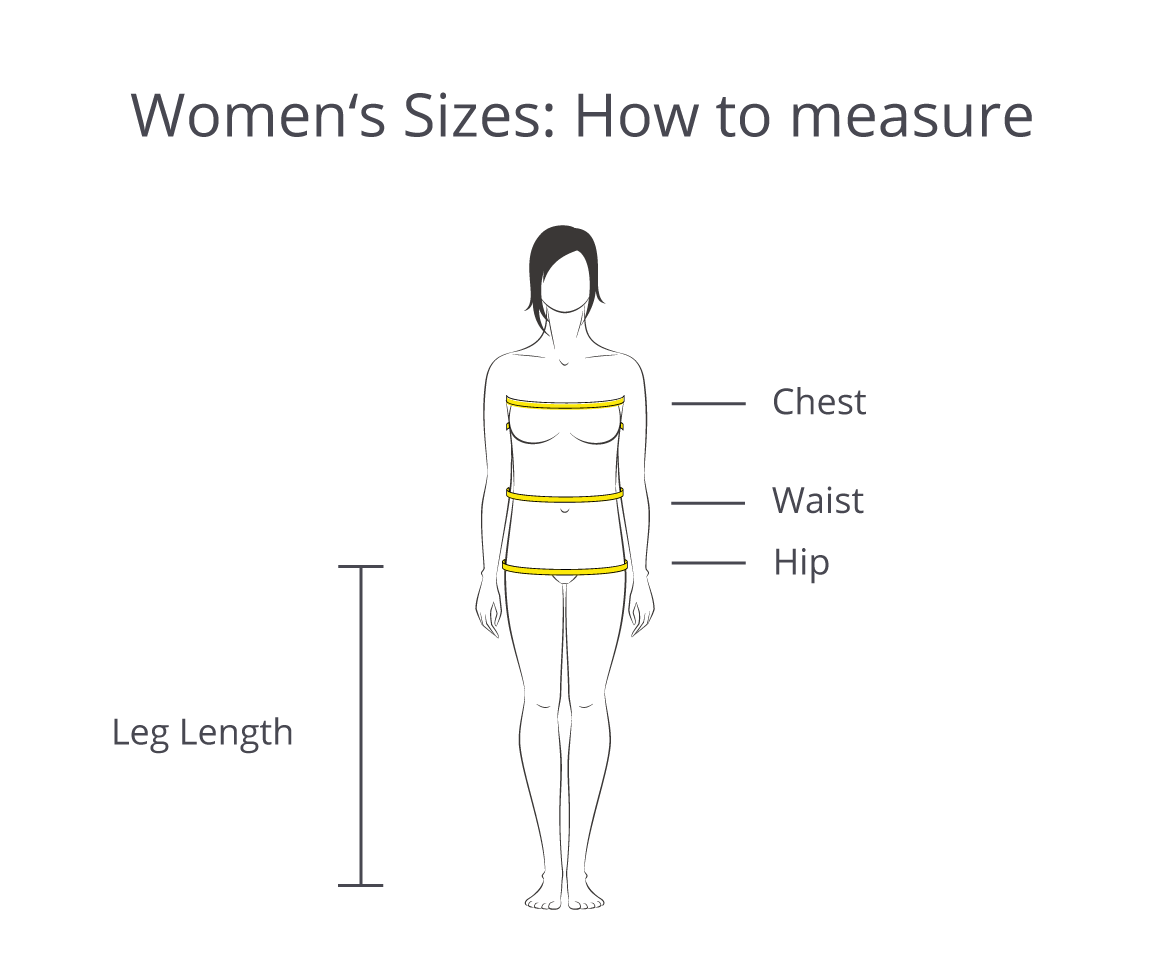
Women’s Pants Size Charts
Use our Women’s pants size chart to find your American or European pants size. How do you read this chart? Actually, it’s quite easy: Measure your waist and hips in inch or centimeters. Then choose the according row in the table. In this way, it’s really simple to find your European pant sizes or convert from EU size to US size.
For example: If you have a 32 inch waist, your size is a US-Size M or Euro-Size 42.
| Waist (Inch) | Hips (Inch) | US Size / Internat. | Euro Size | Waist (CM) | Hips (CM) |
|---|---|---|---|---|---|
| 24 - 25 | 33 - 34 | XXS | 32 | 61 - 63 | 84 - 87 |
| 25 - 26 | 35 - 36 | XS | 34 | 64 - 66 | 88 - 91 |
| 27 - 28 | 37 - 38 | S | 36 | 67 - 70 | 92 - 95 |
| 28 - 29 | 38 - 39 | S | 38 | 71 - 74 | 96 - 98 |
| 29 - 30 | 39 - 40 | M | 40 | 75 - 78 | 99 - 101 |
| 31 - 32 | 40 - 41 | M | 42 | 79 - 82 | 102 - 104 |
| 33 - 34 | 41 - 42 | L | 44 | 83 - 87 | 105 - 108 |
| 35 - 37 | 43 - 44 | L | 46 | 88 - 93 | 109 - 112 |
| 38 - 39 | 44 - 45 | XL | 48 | 94 - 99 | 113 - 116 |
| 40 - 41 | 46 - 48 | XL | 50 | 100 - 106 | 117 - 121 |
| 42 - 43 | 48 - 50 | XXL | 52 | 107 - 112 | 122 - 126 |
| 44 - 46 | 50 - 52 | XXL | 54 | 113 - 119 | 127 - 132 |
| 47 - 49 | 53 - 54 | 3XL | 56 | 120 - 126 | 133 - 138 |
| 50 - 52 | 55 - 57 | 3XL | 58 | 127 - 133 | 139 - 144 |
| 53 - 55 | 57 - 59 | 4XL | 60 | 134 - 140 | 145 - 150 |
| 56 - 58 | 60 - 61 | 4XL | 62 | 141 - 147 | 151 - 156 |
Women’s Pant size Conversion Chart
With our Women’s Pant Size Conversion Chart, you can easily convert your US size into various international pant sizes.
| US / Internat. Size | UK Size | Euro Size | French Size | Italian Size |
|---|---|---|---|---|
| 3XS | 2 | 28 | 30 | 34 |
| XXS | 4 | 30 | 32 | 36 |
| XS | 6 | 32 | 34 | 38 |
| S | 8 | 34 | 36 | 40 |
| M | 10 | 36 | 38 | 42 |
| L | 12 | 38 | 40 | 44 |
| XL | 14 | 40 | 42 | 46 |
| XXL | 16 | 42 | 44 | 48 |
| 3XL | 18 | 44 | 46 | 50 |
| 4XL | 20 | 46 | 48 | 52 |
| 5XL | 22 | 48 | 50 | 54 |
| 6XL | 24 | 50 | 52 | 56 |
| 7XL | 26 | 52 | 54 | 58 |
| 8XL | 28 | 54 | 56 | 60 |
How to measure your pants size?
Women’s Jeans Size Chart
If you ask yourself what size is a 30-inch waist in women’s jeans, then use this chart to find out that it corresponds to a US Size 12 or EU 40.
| Waist (Inch) | US Jeans Size | Euro | Waist (CM) |
|---|---|---|---|
| 24 | 0 | 32 | 61 |
| 24.5 | 2 | 32 | 63 |
| 25.5 | 4 | 34 | 65 |
| 26.5 | 6 | 34 | 67 |
| 27.5 | 8 | 36 | 70 |
| 28.5 | 10 | 38 | 73 |
| 30.5 | 12 | 40 | 77 |
| 31.5 | 14 | 42 | 80 |
| 33 | 16 | 42 | 84 |
| 34 | 18 | 44 | 86 |
Find out more about women’s jeans sizes and how to measure to find the perfect fit.
Other Apparel Sizes
Women’s Shirt and Sweater Sizes
| US / Internat. Size | UK Size | Euro Size | French Size | Italian Size |
|---|---|---|---|---|
| XS | 6 | 32 | 34 | 38 |
| XS | 8 | 34 | 36 | 40 |
| S | 10 | 36 | 38 | 42 |
| S | 11 | 37 | 39 | 43 |
| M | 12 | 38 | 40 | 44 |
| M | 13 | 39 | 41 | 45 |
| L | 14 | 40 | 42 | 46 |
| L | 15 | 41 | 43 | 47 |
| XL | 16 | 42 | 44 | 48 |
| XL | 17 | 43 | 45 | 49 |
| XXL | 18 | 44 | 46 | 50 |
| XXL | 19 | 45 | 47 | 51 |
| 3XL | 20 | 46 | 48 | 52 |
| 3XL | 21 | 47 | 49 | 53 |
| 4XL | 22 | 48 | 50 | 54 |
| 4XL | 23 | 49 | 51 | 55 |
Women’s Jackets Sizes
| Chest width (inch) | Hip width (inch) | US size | European clothing size | Chest width (cm) | Hip width (cm) |
|---|---|---|---|---|---|
| 29 - 30 | 33 - 34 | XXS | 32 | 74 - 77 | 84 - 87 |
| 31 - 32 | 35 - 36 | XS | 34 | 78 - 81 | 88 - 91 |
| 32 - 33 | 36 - 37 | S | 36 | 82 - 85 | 92 - 95 |
| 33 - 34 | 37 - 38 | M | 38 | 86 - 89 | 96 - 98 |
| 34 - 36 | 39 - 40 | L | 40 | 90 - 93 | 99 - 101 |
| 37 - 38 | 40 - 41 | L | 42 | 94 - 97 | 102 - 104 |
| 38 - 39 | 41 - 42 | XL | 44 | 98 - 102 | 105 - 108 |
| 40 - 41 | 43 - 44 | XL | 46 | 103 - 107 | 109 - 112 |
| 42 - 43 | 45 - 46 | XXL | 48 | 108 - 113 | 113 - 116 |
| 44 - 46 | 47 - 48 | XXL | 50 | 114 - 119 | 117 - 121 |
| 47 - 48 | 48 - 49 | 3XL | 52 | 120 - 125 | 122 - 126 |
| 49 - 50 | 50 - 51 | 3XL | 54 | 126 - 131 | 127 - 132 |
| 50 - 52 | 52 - 53 | 4XL | 56 | 132 - 137 | 133 - 138 |
| 53 - 54 | 54 - 55 | 4XL | 58 | 138 - 143 | 139 - 144 |
| 55 - 57 | 56 - 58 | 5XL | 60 | 144 - 149 | 145 - 150 |
| 58 - 60 | 59 - 60 | 5XL | 62 | 150 - 155 | 151 - 156 |
This is how you measure to find the perfectly fitting jacket.
Bra Size Chart
Finding the right bra size is another complicated matter for women’s clothing, but thanks to more modern brands, bra sizes today can cover more diverse measurements as for how it should be. To find your body size (the number on a bra size) and cup size (the letter/s on a bra size), follow this guide.
Panties Size Chart
Some brands use different panty sizes, as outlined in the table below.
| Waist in Inches | Hips in Inches | US Panty | US Dress | US Alpha |
|---|---|---|---|---|
| 21-22 | 27-29 | 2 | 0 | XXS |
| 23-24 | 30-32 | 3 | 0-2 | XS |
| 25-26 | 33-35 | 4 | 4-6 | S |
| 27-28 | 36-38 | 5 | 8-10 | M |
| 29-31 | 39-41 | 6 | 12-14 | L |
| 32-34 | 42-44 | 7 | 16-18 | XL |
| 35-37 | 45-47 | 8 | 20-22 | XXL |
| 38-41 | 48-50 | 9 | 24-26 | 3XL |
| 42-44 | 51-53 | 10 | 28-30 | 4XL |
| 45-47 | 54-56 | 11 | 32-34 | 5XL |
Women’s Accessories Sizes
Ring Sizes
Rings are one of the most interesting accessories, a woman can wear. To measure your ring size, use a thread or a dental floss, wrap it around the base of the finger that will wear the ring, mark your measurement with a pen or marker, and put it against a ruler to see how it measures in millimeters(mm), which will be the inside circumference. The inside diameter will be the top to bottom measurement of a ring that already fits you. Use this converter to get your ring size.
Belt Sizes
Find our belt sizing guide here.
Maternity Sizes
Although a woman’s belly increases throughout the pregnancy, maternity sizes go by a woman’s non-pregnant size, with expandable waists and loose tops to make room for the growing size.
| XS | Bust in Inches | Under Bust in Inches | Hip in Iches | Thigh |
|---|---|---|---|---|
| S | 85 - 90 | 70 - 75 | 90 - 95 | 54 - 57 |
| M | 91 - 96 | 76 - 81 | 96 - 101 | 58 - 61 |
| L | 97 - 102 | 82 - 87 | 102 - 107 | 62 - 65 |
| XL | 103 - 108 | 88 - 93 | 108 - 113 | 66 -69 |
| 2XL | 109 - 114 | 94 - 99 | 114 - 119 | 70 - 73 |
| 3XL | 115 - 120 | 100 - 105 | 120 - 125 | 74 - 77 |
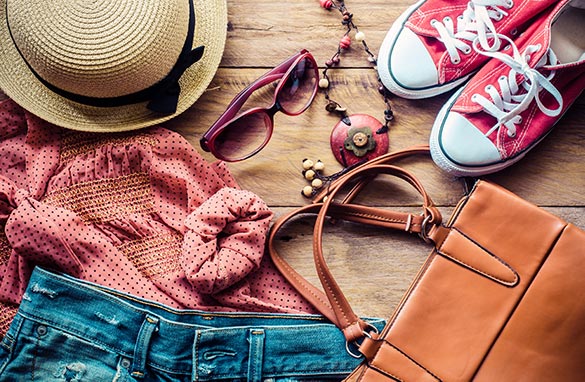
What is Vanity Sizing?
Technically referred to as a size inflation, vanity sizes are a common trend in fashion where a size number increases its corresponding measurement, often in an attempt to make buyers feel skinnier than what they would normally be. If anything, this also shows how clothing sizes have changed through the years. To avoid being confused by this trend, keep in mind the following tips, especially if you are buying online:
- Always check the online store’s size guide
- Read product reviews, comments, and ratings
- Make sure to read all product information and details
- Talk to the seller if possible
Are there clothing sizes based on height and weight?
As you would have guessed by now, this would be impossible because of the high diversity of women’s sizes when it comes to dimensions. To put it simply, a specific weight can come in different heights and body types, making it complicated, and even if you manage to match a height and weight, the body measurements can be entirely different from one person to another. If you want to ensure proper fit, always go by your specific body measurements.
Can we really rely on clothing sizes?
Doesn’t that outfit look perfect on the mannequin? But wait, you try it on yourself, and you only get disappointed! Any woman can definitely relate to this shopping experience. Now imagine shopping online, where the challenge in finding that perfect fit is doubled since one can only rely on photos and online information before deciding on a purchase. Another factor to consider is that online shops vary in sizes depending on their location, with many stores even using their own measurements that go beyond the usual “Small, Medium, Large, Extra Large” sizes, which is why consumers must be very careful when it comes to buying clothes.
Those on the extreme sides of the standard measurements will often find themselves questioning possibly every guide available out there. Published sizes can be really confusing, especially if you are looking at a size guide that you are not familiar with, so it will always help to keep your updated sizes handy and compare it against the chart you are looking at. Keep in mind that you should also adjust your body measurements depending on the type of fit you want. While we may all have an idea how clothing sizes are determined, it will still pay to be extra meticulous if you want to reduce or eliminate the chances of having to return that item you purchased online.
Dressing for Your Body Type
- Tall – if you stand 5’8” or above, you are most likely to find a good fit in the “Tall Section” especially if you are buying bottoms like jeans, trousers, and skirts.
- Petite – for heights 5’3” and below, the “Petite Section” is a good place to shop from whether you are buying dresses or tops and bottoms.
- Curvy – the “Curvy Section” ideally caters to women whose waist measurements are at least 7 inches smaller than their chest measurements, and hip measurement that are 10 inches greater than their waistline.
- Plus Size – this term may vary per country, but in general, this refers to those above the sizes 10 and XL, although some brands often use the term “curvy” as well to avoid sounding offensive. Not all brands carry plus sizes, so if you fall on the larger size of the chart, keep an eye on brands that offer plus sizes.
To help you find that perfect fit whether buying online or not, you can refer to the guides below, created for each clothing type, just convert as needed from the standard table above. For dresses, sweaters, and suits, you can use the table above as well.
Tips to find the right clothing size
Tip 1: Measurements
It is best to take the trouble to measure your body measurements with a tape measure. It is decisive: Chest, waist and hips including buttocks. The neck circumference is still interesting for men. Write down your values and put the note in your wallet for your next purchase. Most sellers should be able to do this and advise you accordingly.
Tip 2: Manufacturer tables
When shopping online, it turned out that many manufacturers and brands have their own measurements. The corresponding tables are often offered in the online shops to click on. Use them to make sure! If you are shopping in a store of the same brand, printing this table can be helpful.
Tip 3: Read ratings
Also, often useful: the comments and ratings of other online shoppers on a garment. Many people state in their ratings whether the garment has fitted as expected, or whether they recommend a number smaller or larger to others. You can also often find references to quality and material in the evaluations.
Tip 4: Your figure type
In addition to body dimensions, the figure type is also relevant: Some have narrow shoulders, others have a slender waist and the next one has a wider pelvis. Look out for brands or cuts that cater to your figure type.
Figure types
Figure type H: Upper and lower body are the same width or narrow, barely waist
With this type of figure, you should take care to emphasize your femininity and create unavailable curves visually through clothing. For example, with highly waisted, flared skirts or waist belt. Statement chains and generally jewelry can also help.
Figure type V: Wider shoulders, the body becomes narrower towards the bottom
In the case of sporty shoulders, one should take a back seat and emphasize the slender legs and cuffs. Uni-colored tops with V-neck create a good balance. Trousers and skirts may gladly stand in the focus and show off with colors and patterns.
Figure type X: Shoulders and hips are equally wide, narrow waist
The most feminine of all figure types should skillfully stage his curves. For example, with narrow pencil skirts, high waistbands and waisted tops. However, the clothes should definitely fit well to achieve the wow effect.
Figure type O: The center of the body is slightly wider than the rest
If you are rather roundish and would like to conceal this, it is best to wear long blazers or longer cardigans, combined with slender trousers and skirts. A V-neck is more flattering than a round neck. Basically it should be a bit purer, rather wear darker colors on the stomach and tan trousers. Patterns and colors rather “outside” than jacket or cloth. Even long chains are good for stretching.
Figure type A: Top narrow, wider hips
A clever choice of clothes can make this type of figure look more balanced: The slender upper body and shoulders can be accentuated by eye-catching tops, colors or patterns, shoulder flaps or shawls, while the legs and hips can be set to more subdued colors. Straight trousers and skirt cuts stretch optically.
Pro Tip: For quick conversions, always keep updated measurements as close to your body as possible without any clothes in the way. Keep this information handy by saving it on your phone or securing it inside your wallet.
Fashion
Discover our exclusive t-shirts and tops, designed in collaboration with a renowned designer. Limited edition fashion at your fingertips!
Life Items
Our Life items are like a treasure trove waiting to be discovered

